Case-studies
Overview
The hydropower plants (HPP) used as case-studies are operated by Hidroerg – Projectos Energéticos, Lda, incorporated in 1989 and headquartered in Lisbon. The object of the Company is to build, manage and operate power facilities designed for the production of electricity from renewable energy sources.
Hidroerg and its affiliated companies own ten renewable-based energy production facilities – seven hydropower schemes and three wind farms -, all located in the central and northern regions of mainland Portugal.
The powerhouse is located on the confluence of Couto with Covas River and has a horizontal area of ca. 220 m2. In the lower floor we may found the two turbine-generator units, the turbine protection butterfly valves, the electro-hydraulic governors, the lubrification systems and the generator’s excitation systems. In the upper floor are the electrical installations, namely the protection, signal, automation and electrical/hydraulic control panels, the auxiliaries panel and the metal switch gear at the generation voltage.
Follow Hidroerg youtube channel to know more
Bragado HPP
The Bragado Hydropower plant (HPP) is located in the North of Portugal, on the Avelames river, which is a tributary of the Tâmega river (Douro river basin).
The Avelames river is characterized by a strong seasonal variation in flow, with the highest discharge peaks occurring during the wet semester (October-March). Inter-annual variation in precipitation and, consequently, in runoff, is also large, as it is typical of a river with a Mediterranean flow regime. Mean long term annual discharge at Bragado weir amounts to 1.4 m3/s. The catchment area of the Avelames river at the section of Bragado weir is 78.8 km2. There are no other HPPs in the same river.
The water body at the HPP Bragado is classified as a natural water body with Good Ecological Status.
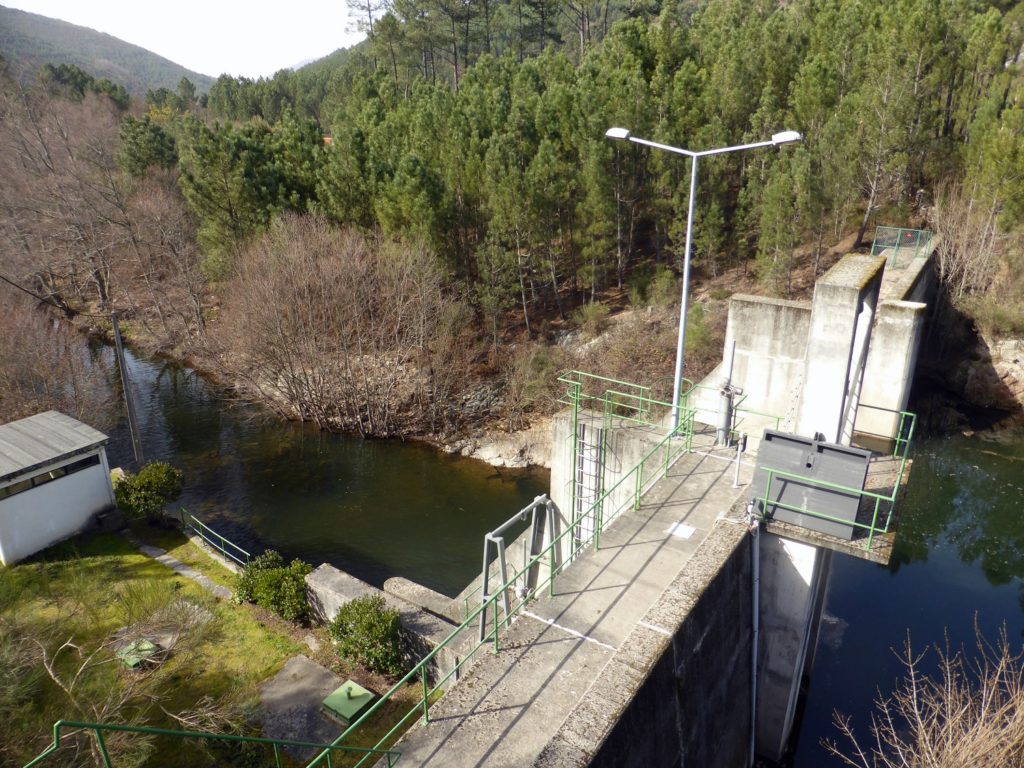
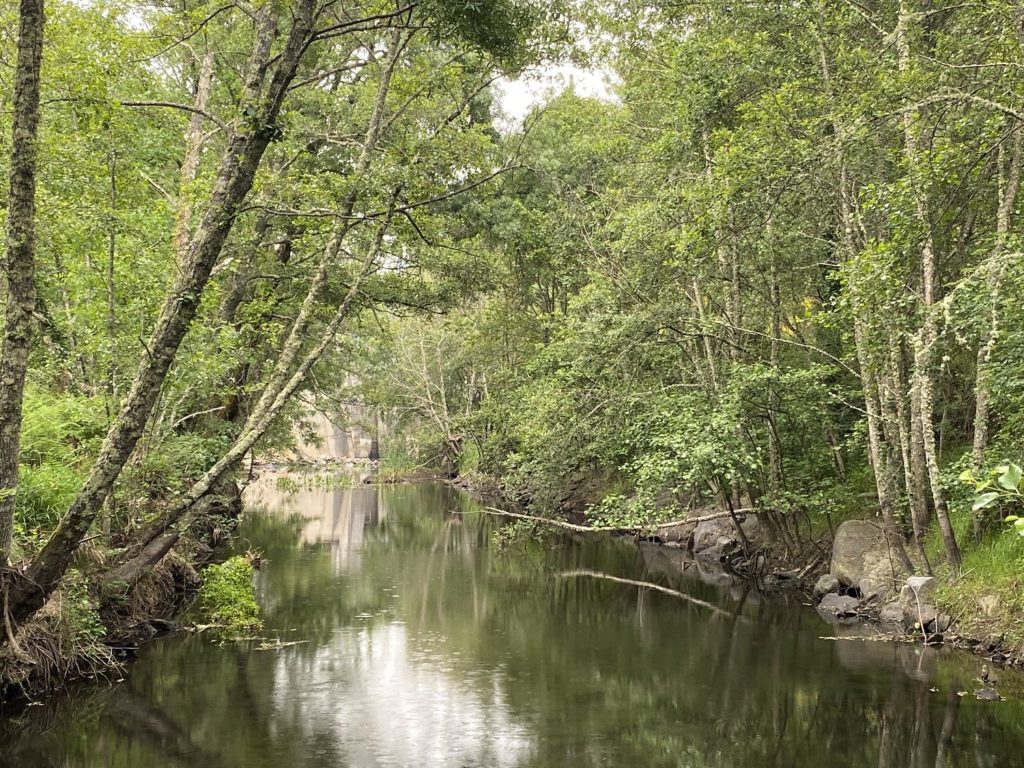
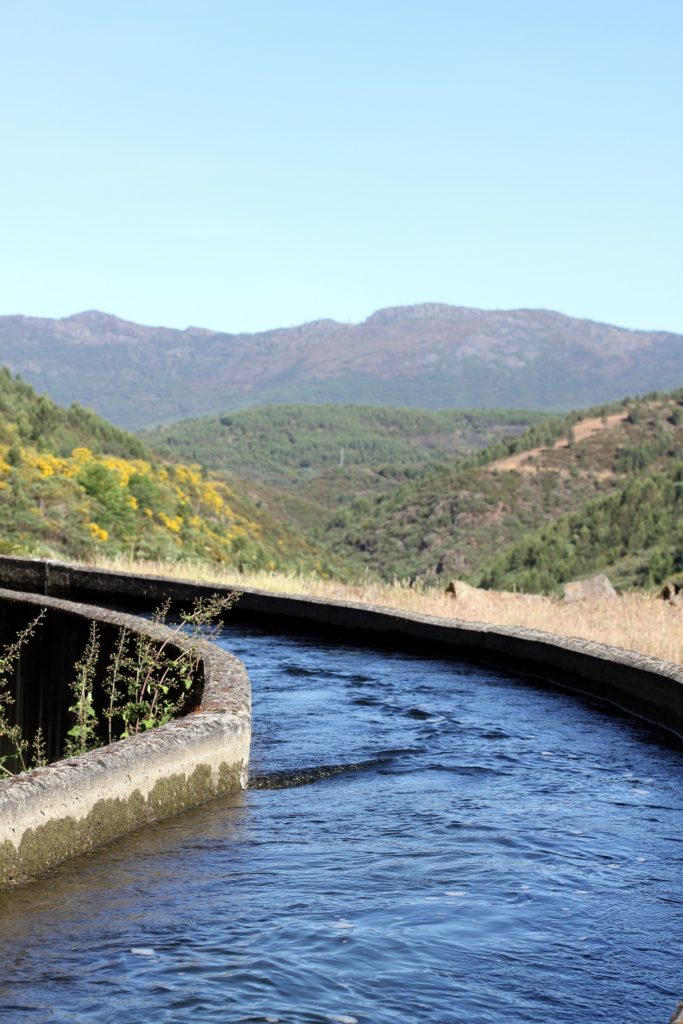
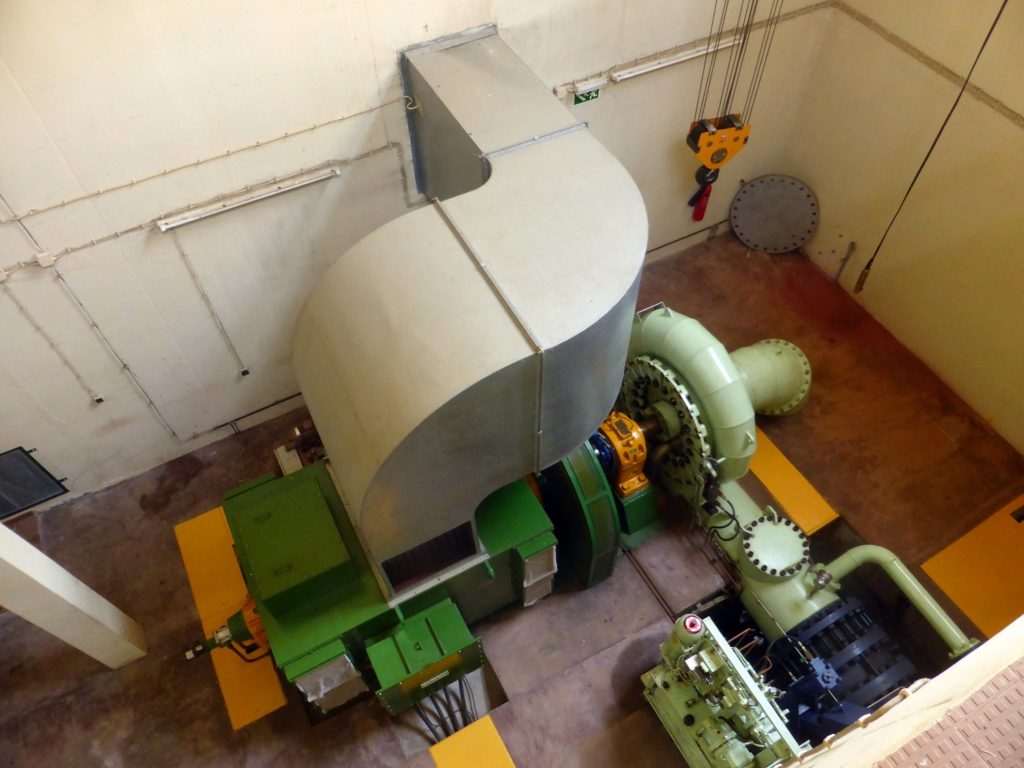
Layout
Bragado is a run-of-river HPP with partial daily flow regulation. It has an installed capacity of 3.1 MW and a mean annual electricity production of 9.0 GWh. The small reservoir created by the weir has a useful storage capacity of 25000 m3 (total capacity of 34000 m3), located between the full reservoir level, FRL=495.1, and minimum drawdown level, MDDL=492.8. The weir was designed for the 100-year peak flood discharge of 230 m3/s.
The powerhouse of Bragado was designed for a maximum turbined discharge (or design discharge) of 2.2 m3/s and a net head of 155.2 m and it is equipped with one Francis turbine with horizontal shaft. The water permit of Bragado was issued in 1996, the construction of the scheme started in August 1997 and the first connection to the national electricity grid took place in December 1998.
The Bragado HPP includes a small weir equipped with a submerged water intake. The weir creates a reservoir with a useful capacity and an area at the FRL of 25000 m3 and 5600 m2, respectively. Downstream of the water intake is the conveyance system which includes an open canal (2490 m long), a forebay, a penstock (f=900 mm and 290 m long) and a powerhouse (installed capacity of 3.1 MW). The bypassed reach of the Avelames River, comprehended between the weir and the tailrace of Bragado, is 3.7 km long.
The minimum instream flow/ecological flow release by the weir is of 64 l/s. Due to the low river connectivity downstream of Bragado HPP no fish pass was built in the weir.
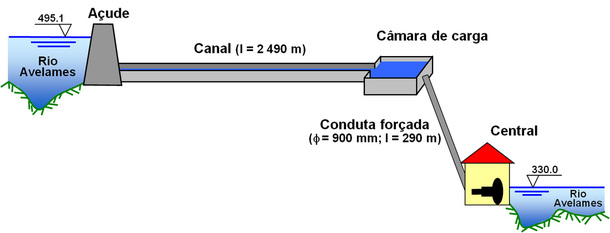
Location
Bragado HPP is located in North Portugal in Vila Pouca de Aguiar Municipality
41° 34′ 53.27″ N, 7° 40′ 50.95″ W
Covas do Barroso HPP
The Covas do Barroso HPP is a run-of-river power plant exclusively designed for hydropower production. This power plant, with an installed capacity of 6,4MW, was designed for a maximum discharge of 5.7 m3/s and a maximum gross head of about 135 m. The mean annual energy production is 18.4 GWh.
The scheme is provided with two intake structures without flow regulating functions, located on Covas River and one of its right bank tributaries, Couto River. These intake structures consist of two concrete weirs, 9.5 m and 15 m in height, respectively, creager-type spillways, Tyrolian-type water intakes and hydromechanical equipment. They are still provided with ecological and downstream irrigation discharge control systems, with a joint maximum capacity of 180 l/s. The total submerged area, at the crests’ elevations, is 9500 m2 only, corresponding to a stored volume of 31000 m3.

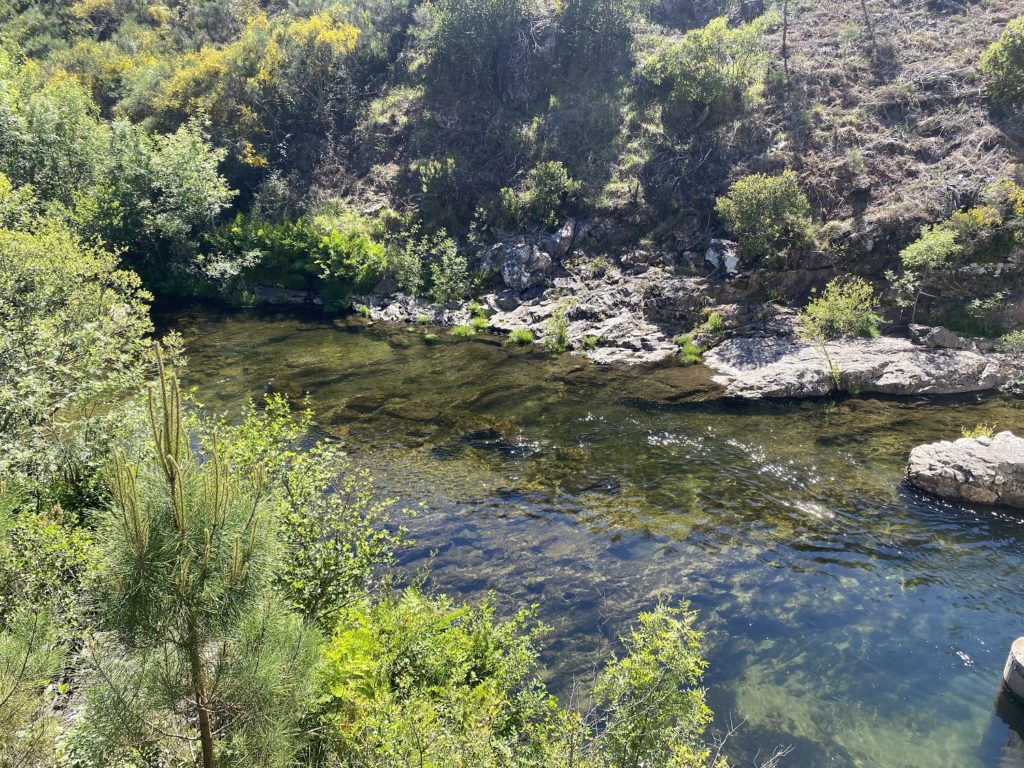
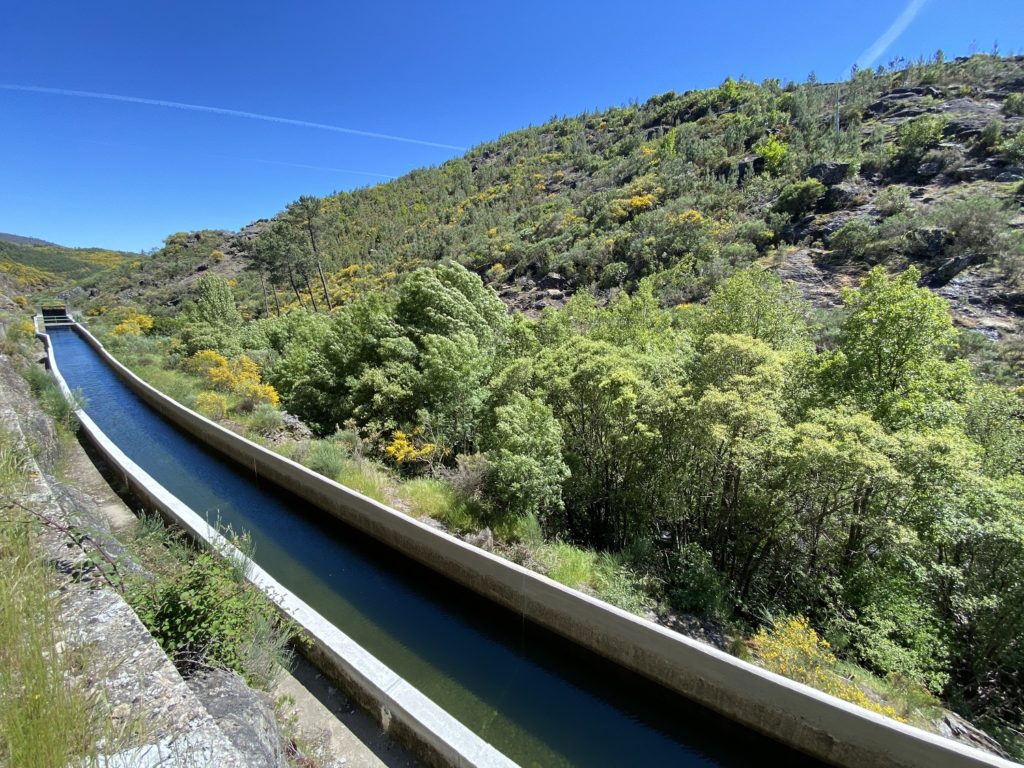
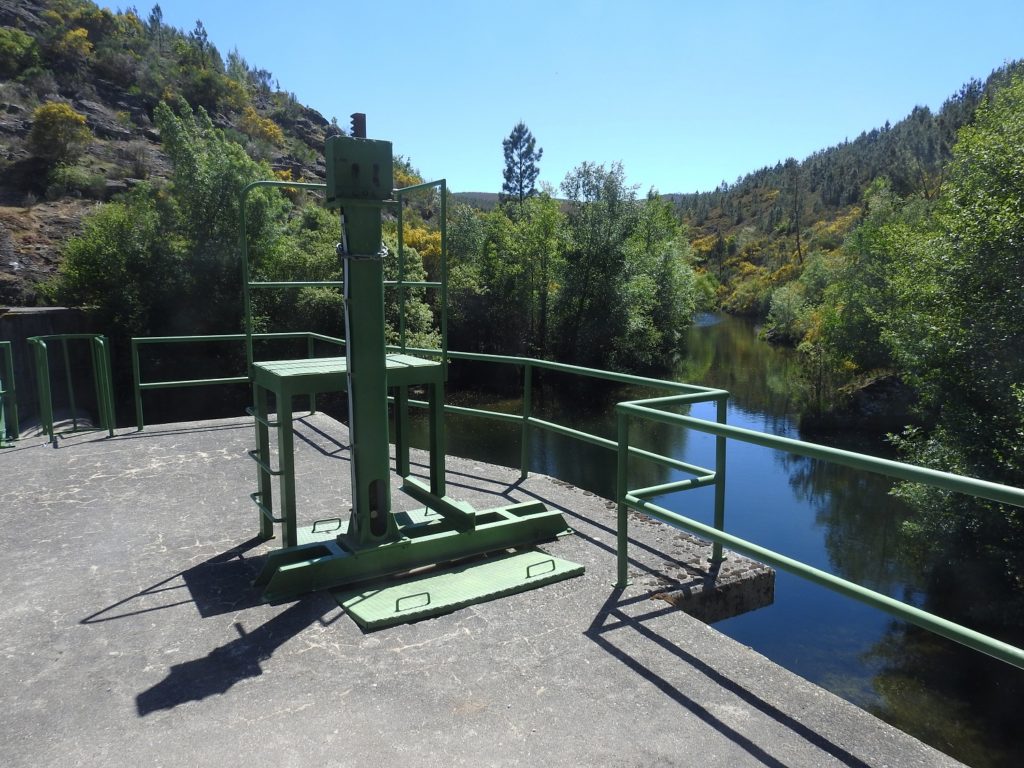
Side spillways, to control the excess diverted flows, as well as desilting and pebbles removing structures, to remove the solid material, are located at the beginning of the hydraulic circuit just downstream from the weirs. The hydraulic circuit extends along Covas River’s right bank and Couto River’s left bank. In its free surface branch, between the weirs and the forebay, it is composed of two reinforced concrete canals, with a global length of 3200m, and 0.85 m and 2.80 m wide rectangular sections. Both canals include cut-and-cover branches and are provided with aqueducts, over small streams, pedestrians passages and rescue ramps, the latter every ca. 350 m. The canal along Couto River still includes two channel-bridges over more significant water lines. The forebay, with a horizontal area of 125 m2 and a maximum depth of 6.3 m, where both adduction canals are joined, is equipped with level monitoring systems through which the diverted flow is controlled. Immediately downstream from the forebay is the valve chamber where, among other equipment and electrical installations, is situated the penstock protection butterfly valve. The penstock, 350 m long, buried in a trench, is made of helicoidal welded steel.
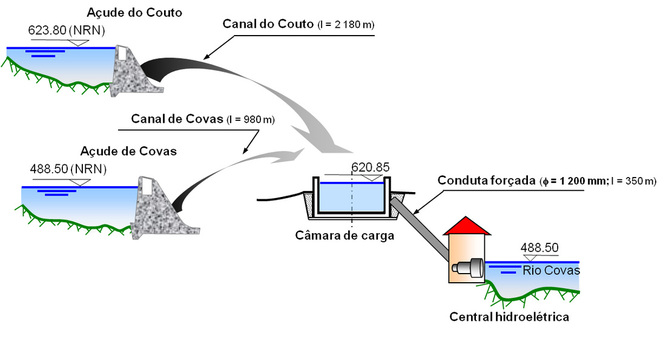
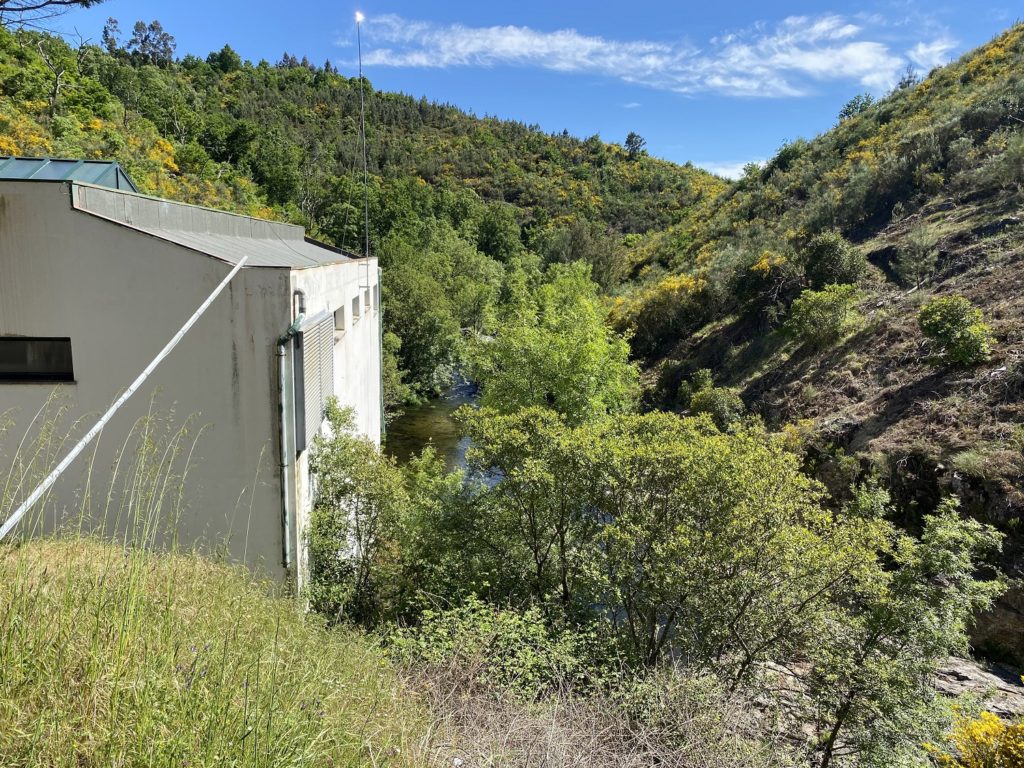
The powerhouse is located on the confluence of Couto with Covas River and has a horizontal area of ca. 220 m2. In the lower floor we may find the two turbine-generator units, the turbine protection butterfly valves, the electro-hydraulic governors, the lubrification systems and the generator’s excitation systems. In the upper floor are the electrical installations, namely the protection, signal, automation and electrical/hydraulic control panels, the auxiliaries panel and the metal switch gear at the generation voltage.
Location
Covas do Barroso HPP is located in North Portugal in Boticas Municipality
41º 38’ 31.56’’ N 7º 48’ 43.46’’ W